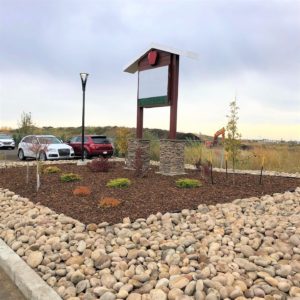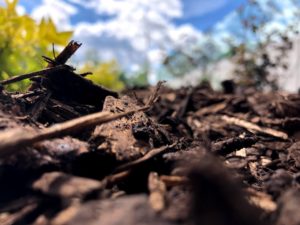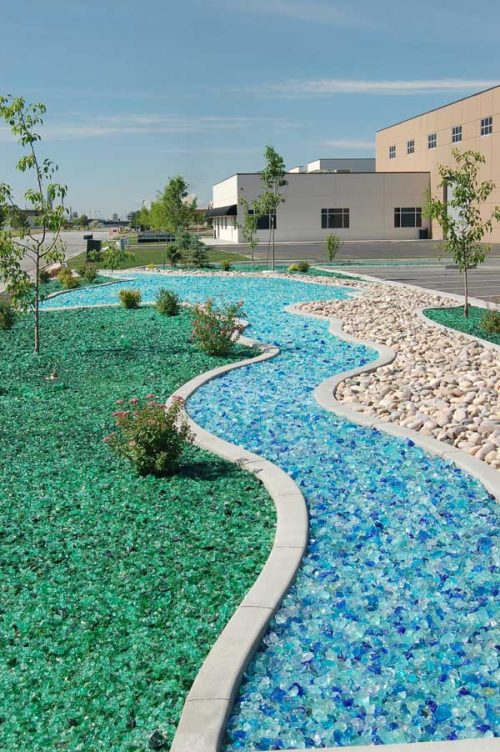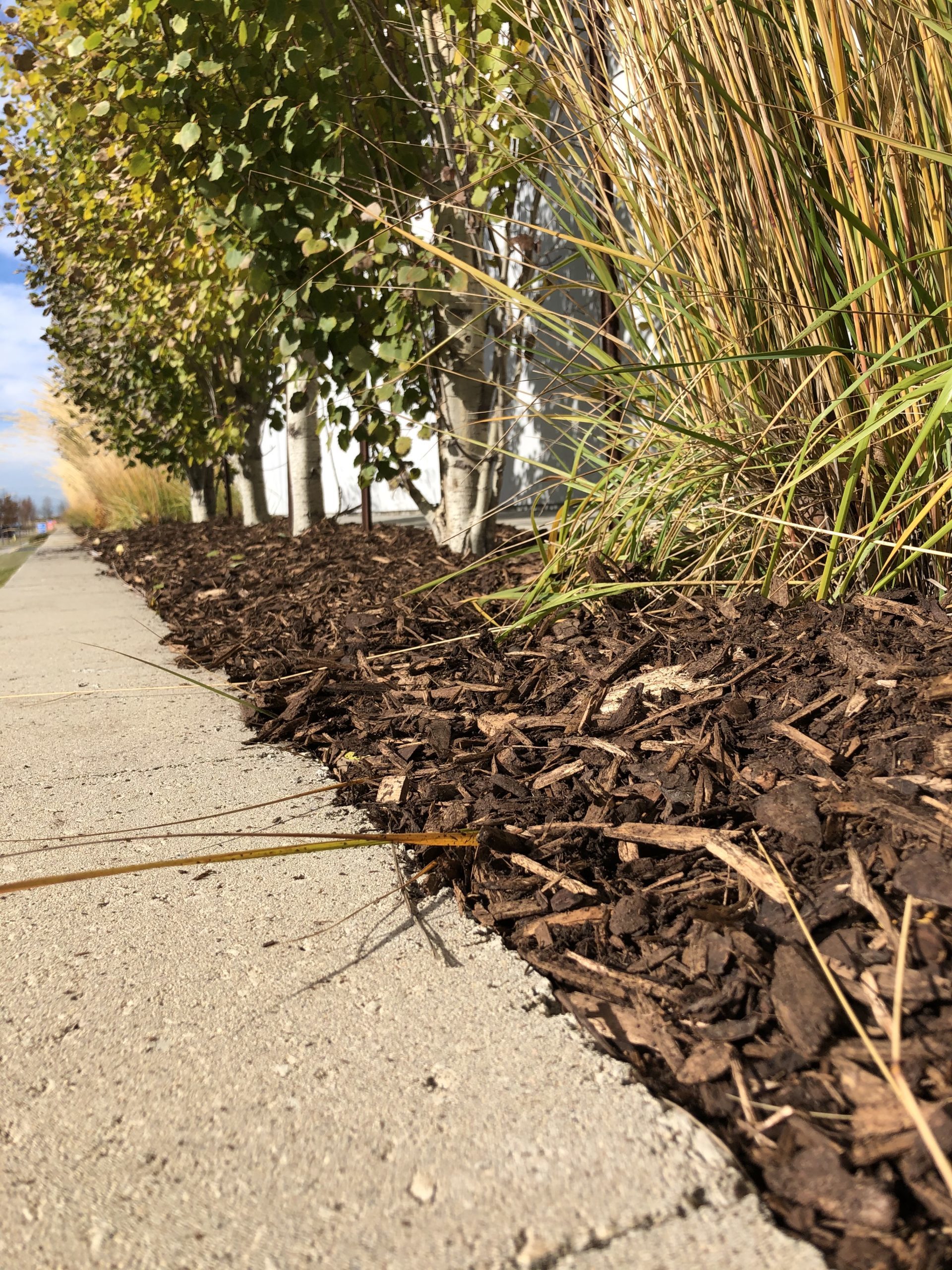When designing or renovating a landscape, it can be difficult to decide if rock or mulch would look best in our shrub and tree beds. In this post we will break down the advantages and disadvantages of both options as well as go over some alternatives. By covering the ground with rock or mulch, the soil is protected from the sun and wind allowing it to retain moisture better. The ground cover also prevents sunlight from reaching the soil surface, which will block light for any potential weeds.

Mulch
Mulch is composed of organic material and is used to cover the soil in tree, shrub, or garden beds. Mulch can consist of hay, straw, grass clippings, woods chips, or bark nuggets. Fabric should not be placed between the mulch and the soil, as the nutrients from the mulch will seep into the soil overtime. Moreover, fabric will increase the likelihood of the mulch being blown away in the wind. Mulch is cheaper than rock to install but will cost more over time, as it will need to be topped up periodically.

Mulch Benefits:
- Adds nutrients to the soil as it breaks down over time.
- Retains moisture.
- Helps keep the soil cool in the summer and warm in the winters.
- Provides access and habitat for beneficial insects like earthworms and ground beetles.
- Chokes out weeds.
- Is light and easy to handle, making it easier to plant in and work around mulch beds.
- Because it is a lightweight material, it can be used over underground parkades and other weight sensitive structures.
Mulch Negatives
- Needs to be replenished periodically; as mulch breaks down into the soil, it will eventually dissipate until there is not enough left to fulfil its purpose.
- Easily moved by wind and run off.
- Mulches original color and smell will fade with time.
- Too much mulch will prevent the movement of air and moisture altogether and will harm the plants in the bed as well as lower the soil quality.
Rock
Rock used in tree or shrub beds comes in a variety of shapes, colors, and sizes. It is free of sediment, sand, soil, or gravel. Rock is usually installed over landscape fabric to stop the rock from sinking into the soil.

Rock Benefits
- Lasts a long time; unless physically removed rock will not need replenishing.
- Rock will not fade or change color over time, although it will get dirty.
- Will not shift due to wind or run off, however smaller rocks maybe removed during snow removal.
- Rock can enhance visual appeal in plant beds due to the contrast created between rock and plant.
- Rock is far more effective at preventing soil erosion compared to mulch.
- Rock is much better at controlling run off in properties with drainage issues.
Rock Negatives
- Rock heats up in the sun, which can stress out plants.
- Due to its weight, rock can compact the soil beneath it and put pressure on tree and plant roots.
- Most trees prefer acidic soil and rocks can make the soil more alkaline over time.
- Rock can be difficult to move for planting.
- Trees can swallow rocks as they grow, creating hazards for those removing or stump grinding the tree.
- Rock is less effective at preventing weeds than mulch and needs fabric underneath.
Alternatives
Some alternatives to rock and mulch are rubber mulch and tumbled glass. Rubber mulch is made from shredded vehicle tires that have had their wiring removed. Rubber mulch looks less appealing than rock or wood mulch but is sometimes used in children play areas. However, it is not used for much else, since when the rubber heats up it can leach chemicals into the soil. The level of chemicals is low enough not to cause harm to humans, but high enough to harm plants. Finally, rubber mulch can also be a major hazard if it ever catches fire as it is very difficult to put out.
Tumbled glass is rarely used due to its cost. It is made from recycled glass that has had all its edges worn down. It can range in a variety of colors and can make for a unique and eye-catching aesthetic. Tumbled glass does require regular maintenance, as it will become dirty quickly. Similar to rock, glass attracts heat and is a heavier material, which can cause stress to the plants. Tumbled glass and rubber mulch are good environmentally friendly options, as they are made from recycled products that would normally end up in landfills, however, that means these materials will be difficult to dispose of, should you ever decide to change your landscaping.

Best uses for each type:
Mulch is the best choice for any beds where plant health is a priority. While it will need to be topped up each year, the benefit to your trees and shrubs is worth the effort.
Rock is the best choice for areas that experience heavy winds, heavy run off, or drainage issues. Commercial sites that have large bare beds and heavy snow removal activity will benefit from the longer lasting qualities of rock.
Rubber mulch can be used in areas where children play but is not advised for any other use. Bark mulch is a better alternative to rubber mulch if plants are nearby and if there are no plants in the area sand will also work.
Tumbled glass is good for smaller beds with a specific aesthetic in mind. It goes well with water features or to draw the eye to a certain part of the landscape.


